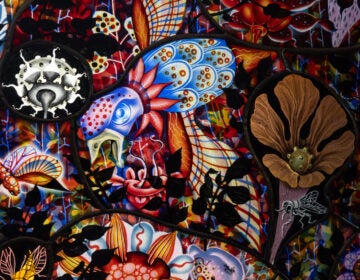Mt. Airy: Yesterday and Today – Touring the grounds of Phil-Ellena
This article concludes nine essays in our column, Yesterday and Today, devoted to the life of George Carpenter (1802-1860) and his mansion, Phil-Ellena. The house was torn down in 1894 to make way for the houses of the new neighborhood named Pelham. I hope that you have enjoyed learning about the world of George Carpenter in some detail.
With the October issue of the West Mt. Airy Neighbors eNewsletter, we will begin a new Yesterday and Today series of essays on the theme: A History for Mt. Airy. My aim is to use our curiosity and imagination and historical records to explore how this fascinating community of people and its landscape came to be.
Having toured, in earlier articles, George Carpenter’s palatial mansion Phil-Ellena, the largest Greek Revival palace in the country when constructed in 1844, we turn now to visit the grounds of the estate, as it was about 1870, ten years after his death.
George Carpenter often opened his 300 acre park to public inspection. On such occasions, there was a guest book to sign and visitors were given a copy of Carpenter’s 1844 pamphlet about Phil-Ellena, entitled A Brief Description of Phil-Ellena. As we enter the grounds, the landscape around us is designed in the Picturesque style with winding paths amid groves of stately trees, life-like statues, long vistas, and romantic out-buildings evocative of Greek and Roman ruins.
One structure is a small Greek temple, created by George Carpenter as a Museum for his many collections of specimens in the fields of ornithology, mineralogy, geology, entomology, botany and zoology. The north and south facades of the museum temple building feature pedimented porticos supported by four fluted columns. There are niches containing statues of Minerva and Eloquence, carved by John Rush. Carpenter was long a member of the Academy of Natural Sciences in Philadelphia and a close friend of the English naturalist Thomas Nuttal The famous ornithologist John James Audubon is said to have visited Carpenter’s museum.
Carpenter built a large Greenhouse south of the mansion for his botanical studies, where he grew “all the finest varieties of foreign grapes” and rare plants. Cisterns in the hot house supplied water pumped constantly throughout the building to warm these exotic vines.
On the northwest side of the property is a summer house, a small octagonal structure with columns and double sash windows opening onto the lawn on all sides. It had a 40 foot spire, with a sculpture of Mercury by Rush, that acted as a wind vane. The Summer House was situated over the Ice House.
The spired spring house was on the south side of the barn. The constant spring fed the two “Silver Lakes” that Carpenter built to provide a reliable water supply for the estate’s needs. These artificial lakes were so expensive to build that Carpenter joked they are lined with silver! They were several hundred feet in length and about 100 feet in width.
The Phil-Ellena estate barn, west of the mansion (at what is now 6818 Cresheim Road), is the only major structure from the old estate to survive. This plain building (in Carpenter’s day) also had a spire and later became the Pelham home of Florence Jules Heppe, president of the Heppe Piano Company. Since the 1920s the “barn” has been the elegant convent of the Sisters of St. Joseph.
There were expensive Kitchen Gardens, and, lastly, the Clock Tower. This 65 foot tall, gray Chinese pagoda-style tower stood back from the corner of present day Germantown Avenue and Carpenter Lane. It had a Lukans clock that chimed the hours for the entire community. The clock tower was demolished around 1900 during the building of Pelham and grieved area residents, who fought unsuccessfully to save it. Its sweet voice and presence were silenced after 60 years.
Burt Froom is a Parish Associate at Summit Presbyterian Church, 6757 Greene St. in Mt. Airy. This essay was originally published on the website of West. Mt. Airy Neighbors (WMAN).
WHYY is your source for fact-based, in-depth journalism and information. As a nonprofit organization, we rely on financial support from readers like you. Please give today.




